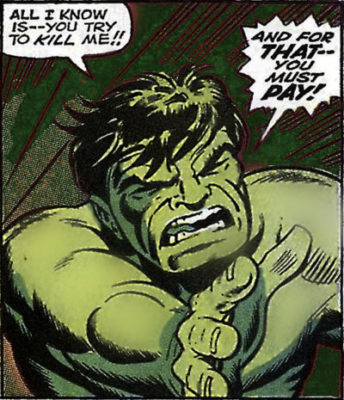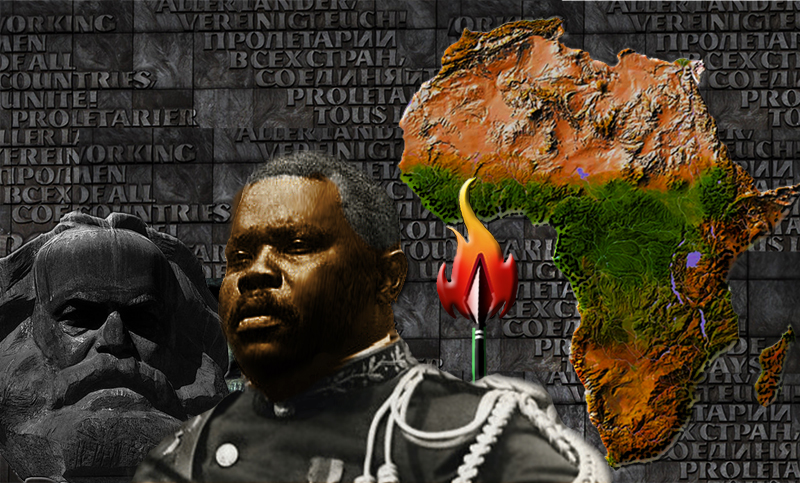 The left implodes. Great hopes were stirred by the Bernie Sanders campaign. It was alleged to be a movement that would continue beyond the primaries, beyond November, promising a Political Revolution that would transform American politics.
The left implodes. Great hopes were stirred by the Bernie Sanders campaign. It was alleged to be a movement that would continue beyond the primaries, beyond November, promising a Political Revolution that would transform American politics.
It ended badly. It ended in the arms of Hillary Clinton, in the swarms of the millions whose sole raison d’etre was to overturn the Trump presidency. That ended badly. It ended in the anti-Russia hysteria that fuels the neocon drive for the American New World Order, from Syria to North Korea to Venezuela and all points North, South, East and West. This will end badly.
Sanders refugees fled the Dems and joined the Green Party. But that influx was too much of a shock to the Green system of lethargy for the party’s Old Guard to bear. Some of these new socialists were anathema to the small-business environmentalist Old Guard. These new socialists were former Democrats who, having grown up in the ready-made environment of a Democratic Party campaign, knew little about having to build their own party from the ground up. Cast into the current turmoil, they had a lot to learn, and learn fast. Too many didn’t.
There are also veteran Green socialists with a class perspective, and a commitment to grassroots organization of the black and Latino communities. As party veterans such as Bruce Dixon (White Liberal Guilt, Black Opportunism and the Green Party), Margaret Flowers and Kevin Zeese (Green Party Growing Pains; Our Own Crisis of Democracy) can attest, they are under assault by the conservative white Old Guard who use newly-coined token black leaders as a front for keeping the party on the path of business-as-usual, setting black against black.
 The Green Party is descending into polemical mayhem with charges of racist, infiltrator and Democratic Party sellout flying thick and fast. The left has forgotten the art of serious political discourse, as the name-calling tactics of the playground prevail.
The Green Party is descending into polemical mayhem with charges of racist, infiltrator and Democratic Party sellout flying thick and fast. The left has forgotten the art of serious political discourse, as the name-calling tactics of the playground prevail.
Yet if only the rest of the left would display such youthful energy. Most of the left forms the heart if not the soul of the legions of anti-Trump, former-Hillary Clinton minions who would catapult neocon Vice President Mike Pence into the Oval Office. They are led, but are incapable of leading in any radical direction. They cling to their respective identities. They all claim to support each other’s agendas, when at best they cancel each other out. Their theoretical landscape is utterly bleak. As individuals they are often decent, serious people, experts at exposing and excoriating a collapsing system, but not so good at changing it. As a total institution, they have become less than the sum of their parts. Their prescription is Same Old Shit, and more of it. Still …
Jim Crow is now a liberal.
St. Petersburg, Florida holds the headquarters of the Uhuru movement. The “Sunshine City” is the epitome of a liberal, Democratic Party controlled city that actively upholds a White Power, Jim Crow social system.
Its school system, run by Pinellas County, is rated the worst in the United States. Its school system has explicitly re-introduced segregation, and its black schools are the worst of the worst, commonly known as “failure factories.” Special programs are set up for white students to be bussed to, while black students are not even given a minimum education. Police patrol the halls, black students are suspended for even speaking out, Defiance/insubordination is the most frequent cause of suspension, and students are routinely arrested for “disorderly conduct.” The school-to-prison pipeline starts here.
Years ago the Pinellas County sheriff’s office was banned from the city, but those days are long gone. The department under Sheriff Bob Gualtieri now considers St. Petersburg — and its schools — its happy hunting ground, and the Tampa Bay Times howls about teenage car thieves being the number one menace to society as mere children are killed by police with impunity.
The downtown gentrification juggernaut seeks to make the city “homeless-free.” The Tampa Bay skyline is obscured by burgeoning high-rises and corporate headquarters that the city’s already failing infrastructure can’t possibly accommodate. Entire city blocks are being bought up by out-of-state billionaires. The shops lining Central Avenue are marked for either total renovation — with stratospheric rent hikes — or utter destruction. Had the path of the recent Hurricane Irma not veered just a few miles east as it clawed its way up the spine of the Sunshine State, impoverished south St. Petersburg would now be uninhabitable.
Out of the Blue …
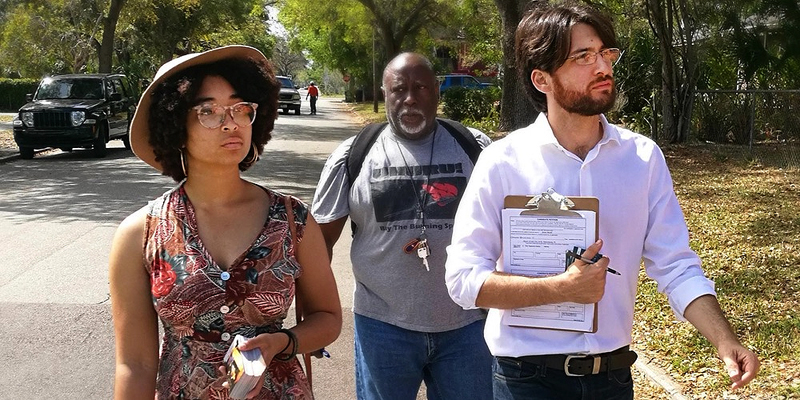
Eritha Akile Cainion campaigns with Jess Nevel.
Last Spring, We were holding a meeting of the Pinellas County Green Party. On the agenda were the Uhuru candidates Jesse Nevel and Eritha Akilé Cainion (now Akilé Anai), running for St. Petersburg Mayor and District 6 City Council, respectively. I had a lot of assumptions about the Uhurus (“Uhuru” is Swahili for “freedom”). Their platform looked good, but they had a certain reputation:
Ultra-left;
Black Separatist;
Black Nationalist and therefore macho, sexist and homophobic;
Anti-white;
All rhetoric;
Cultural Nationalist;
Pro-Reparations, a petit-bourgeois fancy based on exploiting white guilt.
They sent us about a dozen members of their multi-racial “A team”: the candidates themselves, plus Omali Yeshitela, Chairman of the African People’s Socialist Party, and other heavies in the campaign. Surprise #1, Jesse Nevel, their mayoral candidate was white and Jewish. Interesting. Nevel and Akilé spoke. They laid out a vision of Reparations that was completely different from my previous understanding. It went beyond payback for the slave trade.
It focused on more recent attacks on St. Petersburg’s own black community. Two major points stood out:
- The city had bulldozed over 800 black families and 100 black-owned businesses from the land south of Central Avenue in order to build Tropicana Field (the “Dome”) as a home for the Tampa Bay Rays baseball team, and
- The city had recently dumped one billion gallons of raw sewage onto the South Side black community, and into Tampa Bay, leaving untreated feces covering the streets and floating in people’s homes. The city had saved a few million dollars by closing the Alfred Whitted waste treatment plant.
Frankly, Reparations makes a lot of people uncomfortable, and not just on the public policy front. Even on the left, it challenges the notion that white people can make their own peaceful version of revolution, and do it at their own (actually the Democratic Party’s) pace, rather than follow angry black leadership which insists that it must lead NOW! We whites especially don’t like to see our own role as part of an actual white nation (Europe writ large) founded on colonial plunder and massacre and slavery, a white nation still kept running based on that foundation laid centuries ago (see Part 2 for more on this).

Take back the Dome!
The Uhurus were demanding Reparations for those two atrocities, among others. But Reparations is a sticking point for many — where would the money come from? Were all white people supposed to write checks? And then give them where? To spend on what?
The battle cry.
No, say Jesse and Akilé. Checks are fine, but “Nobody benefits at the expense of anyone else! War against the Corporations! War against the System! Radical Times call for Radical Solutions!”
“Nobody benefits at the expense of anyone else!” was what set my head spinning. Theirs was indeed a multi-racial appeal. They presented solid, powerful demands for radical reforms, neither wild nor whimsical. Their nationalism was rooted in the political struggle against the colonial system, nothing like the “dashiki cultural nationalism” that was once fashionable.
We were also told we needed to commit “national suicide” by directly joining with the struggle for Reparations and smashing colonialism, i.e., the specific form that capitalism has always taken to this day.
(I had an intriguing misunderstanding later when I started to write about this. I thought we had been told we needed to commit “racial suicide,” not “national suicide.” Why that mistake? Easy to answer once asked directly. We in America are organized to see things in terms of race. We are heavily over-determined by the framework of racist ideology, whether we are pro-black or white supremacist, radical or conservative. But Uhuru does not see the fight against racism as central. Racism is understood as the primary ideology that the ruling class uses to maintain its power among the masses, ideology being the stuff in our heads. But the real issue is power. Uhuru insists that the struggle is not to destroy the stuff that’s in our heads, but to destroy the colonial system that is now, more blatantly than ever, kept in power through the barrel of a gun. That is of course a greater challenge, even dangerous in these dangerous times. It calls for action, not mental self-purification. But it is also liberating, as mental self-purification is impossible, but action is not. Or that’s how I took it.)
Just as powerful was their personal presence. Their delegation was multi-racial, clearly a close-knit team. There was a sense of real human warmth. They really wanted the Green Party’s support, without an aura of guilt-tripping or coercion. They were clearly competent and professional, things the Green Party has in short supply. They seemed to have a strong gay and lesbian presence. They wanted us.
Over the course of that evening, my assumptions were demolished line by line.
So what were we to do? I proposed that we endorse them on the spot. We did so unanimously.
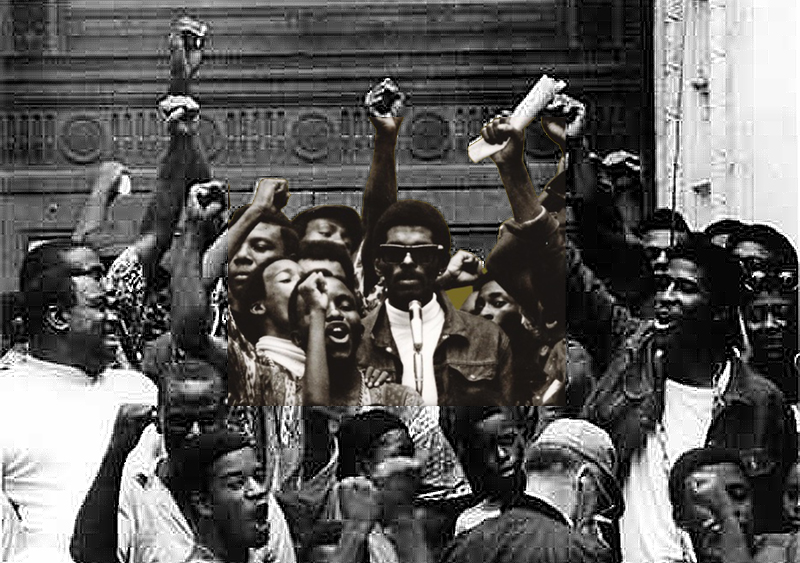
Omali Yeshitela (at mike), Chairman of the African People’s Socialist Party. Out of the blue.
Their whole operation seemed to me like it had come out of nowhere. But I’ve studied revolutions and revolutionary movements, and one of their frequent features is that — to the eyes of governments and politicians and scholars — they do seem to “come out of nowhere,” just like the Uhurus. But a closer study of past revolutions has consistently shown that these movements never come out of nowhere. They build for years, organizing, fighting, building a base. Only to the official eye had they been invisible until, for the rulers, it was too late.
… and Into the Black
The Uhurus had announced that they were holding one of their weekly rallies that coming Sunday, at Uhuru House, their headquarters on 18th Avenue South. Rose and I went, and everything we had just seen was reaffirmed.
So I realized I needed to take a hard look at my own blindness, my own assumptions. How had I not seen? The meeting and the rally had cleared up a lot of stuff very quickly. But even that doesn’t fully explain it. Nor does my own racism. The left also has particular political stereotypes just as much as do Academia, the Beltway and Fox News. What were my political assumptions as a 3rd International Marxist, influenced by Michael Hardt & Antonio Negri, and by Vygotsky?
I had a lot of learning to do here.
Obvious first step — read their material. For starters:
Political Report to the 6th Congress of the APSP (link will download pdf)
Chairman Omali’s 2017 Political Report: Putting Revolution Back on the Agenda!
Much of the following is taken from the above two documents, plus their newspaper Burning Spear, numerous conversations, and talks by and with Chairman Omali Yeshitela himself. Most importantly, Rose and I have been active participants with the Uhurus in action, rocking last summer’s official debates and tackling the media that maligned them and tried to shut them out. I’m no pushover for a smooth-talking party line, but as a long-time Marxist the reading was most challenging.
First some history.
Omali Yeshitela emerged as a leader in the midst of the Civil Rights and Black Power struggles of the 60’s. Moved by Martin Luther King AND Malcolm X, he was involved with the Student Non-Violent Coordinating Committee (SNCC). SNCC had outraged the liberal left in 1966 when it asked its white members to leave, rebelling against the patronizing control that white liberals had exercised over the Civil Rights movement. Yeshitela had been in Los Angeles during the Watts uprising of 1965.
In 1966, he stormed into the St. Petersburg City Hall, tore down a painting that depicted black people as servants and savages, and marched with it down the street. Arrested and charged, Yeshitela ultimately spent two-and-a-half years in prison, but that fiery act made him a hero to the community.
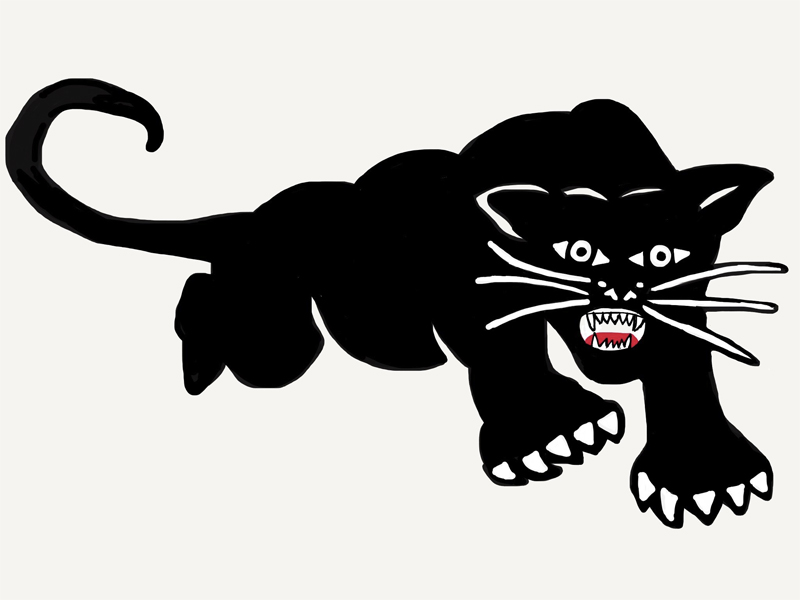 Yeshitela was one of the “survivors” of the destruction of the revolutionary movement of the 60’s, the assassination of leaders such as Malcolm X and Martin Luther King, and the massacre of so many Black Panther Party leaders and members by the police. Yeshitela chose to follow in the footsteps of the Black Panthers:
Yeshitela was one of the “survivors” of the destruction of the revolutionary movement of the 60’s, the assassination of leaders such as Malcolm X and Martin Luther King, and the massacre of so many Black Panther Party leaders and members by the police. Yeshitela chose to follow in the footsteps of the Black Panthers:
“The Black Panther Party was the only revolutionary political party of consequence prior to the emergence of the African People’s Socialist Party (APSP) and it bore the brunt of much of the counterinsurgent repression, leaving its remnants in a state of retreat. Most other remaining African political groupings preferred to shun designation as a party and avoided the internal dynamics necessary to shape and define the class character of a revolutionary organization. This resulted in ambiguity that most often allowed militant, nationalist petty bourgeois organizations to hide their class content behind radical sounding names. However, we were clear that we had to have a revolutionary party rooted in the African working class and committed to African liberation, unification and socialism.”
Predecessors to the APSP were JOMO (the Junta of Militant Organizations), the Burning Spear newspaper, and the Uhuru movement. The APSP was founded in 1972. A central thesis of the APSP, which they maintain to this day, is that …
“ultimately the struggle against racism, when it is given material form, boils down to a struggle for ‘equality’ with the exploited North American working class, that is to say equality within capitalism … [The APSP’s] primary struggle is against colonialism, which is an imperialist form, therefore necessarily having class connotations.”
Holding that the primary struggle is against colonialism, they insist that the African working class is the essential driving force.
As African internationalists, they worked closely with the Zimbabwe African National Union, which went on to govern in Zimbabwe. In the 1970’s, the APSP achieved national prominence by leading the widely celebrated (and ultimately successful) struggle to free Dessie Woods, an African woman associated with the Nation of Islam, who had killed a white man with his own gun after the man tried to rape her and a friend at gunpoint.
Throughout the following decades, the APSP established itself as an independent force in sharp contrast with the “establishments” of the white colonial power structure, the “official” black leadership, and the petit-bourgeois left. Per Yeshitela:
“We recognized that Reparations had to become the property of the masses if it was to be a significant political question. On November 13 and 14, 1982 we held the historic first session of the World Tribunal on Reparations for African People in the U.S. in Brooklyn, New York. The Tribunal found that the U.S. owed African people in the U.S. $4.1 trillion for stolen labor alone, the first empirical quantification of the value of capitalized African labor.
“Immediately after the conclusion of this historical event we launched the African National Reparations Organization (ANRO), whose sole objective was to win the Reparations demand in the consciousness of African people. Following the Reparations tribunal I toured Europe with the Reparations message, going first to London and Ireland, and then to France and Germany, meeting with hundreds of Africans in different settings.”
By 1976, amidst all the Bicentennial hoopla, the party had developed significant support among North Americans (aka white people), and this relationship was consolidated in St. Petersburg, Florida with the launching of the African People’s Solidarity Committee (APSC), which worked directly under the leadership of the APSP for Reparations and against colonial oppression. This required protracted struggle to overturn the patronizing black/white paradigm of “of equal, parallel struggles, where solidarity work meant whites doing their ‘own thing’ to free white women or white homosexuals or white workers while Africans would kinda sorta handle the Africa question.”
Then in 1991, APSP organized the International People’s Democratic Uhuru Movement (InPDUM), their revolutionary mass organization, to expand their struggle more deeply into the black community.
St. Petersburg 1996
As reported in Yeshitela’s Political Report to the 6th Congress of the APSP:
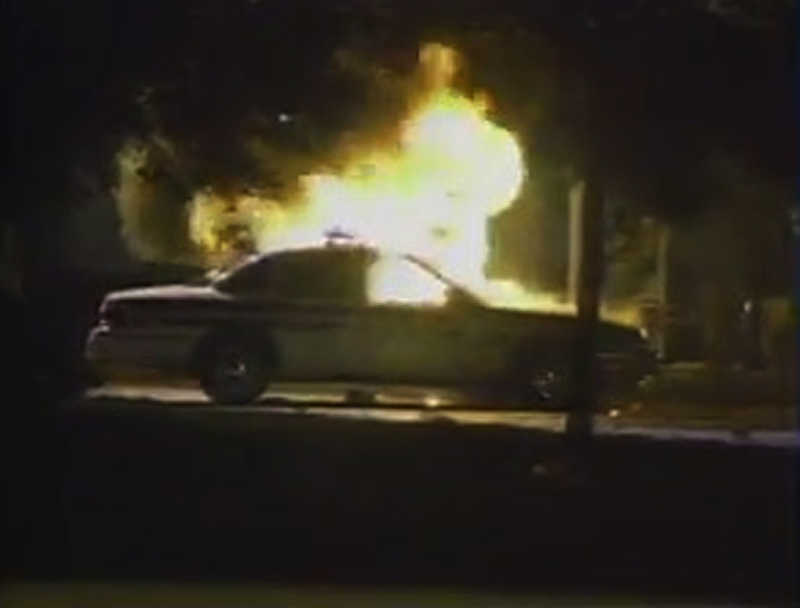
St. Petersburg 1996.
On October 24, 1996 in broad daylight, the St. Petersburg, Florida police department shot dead an 18-year-old African, TyRon Lewis, in front of scores of witnesses in the African community.
“That police murder, which took place three blocks from the Uhuru House, the National Office of the APSP, resulted in a fierce response from the African community. Police cars and corporate news vehicles were torched by the rebelling masses. Liquor stores and other white-owned businesses notorious for their unfair extraction of capital from an impoverished community were also targeted.”
The Uhurus were on the scene. The police and media seized on that to blame them for the uprising, and began harassing them at every turn, arresting them for selling Burning Spear on the street and for passing out leaflets and pamphlets. On November 13, 1996, three weeks after the murder, about 100 community members, some with children, met at an InPDUM meeting at Uhuru House headquarters to protest the coming Grand Jury’s total exoneration of the killer cops. In response, the state and city mobilized hundreds of cops and paramilitary forces who surrounded the building.
Armored and armed to the teeth, this police army declared the gathering illegal and bombarded the community members trapped inside with literally every tear gas canister in the city, shooting incendiary canisters onto the roof in an attempt to set the building on fire.
The African community exploded, battling the police in defense of the building and the entrapped leaders. A police helicopter hovered overhead, reminiscent of the massacre of the MOVE organization in Philadelphia in 1985. The copter was brought down by a bullet hitting its pilot. The battle continued until dawn.
Bill Clinton sent a cabinet member to investigate and the city announced a massive program, called “Challenge 2001,” to dole out $100 million in federal grants and “build better community relationships.” The city appointed its first black police chief, Goliath Davis, who made sweeping changes in department policy. Yeshitela summarizes:
“In the process of this resistance the Party initiated a broad-based African American Leadership Coalition involving sectors of the African primitive petty bourgeoisie whose unity with our Party was influenced by their belief in the prospect of acquiring federal funds to appease the resistance.
“This was an important development because the coalition became a wall of petty bourgeois, national democratic, black ‘respectability’ surrounding our Party and movement that made it difficult for the State to effectively employ a military solution against us with impunity.
“The coalition also became a part of the method through which the Party locked the colonial State in political struggle. Through the coalition we defined this struggle as a contest between a pessimistic public policy of police containment of our people versus an optimistic public policy of economic development for a population suffering economic quarantine by the government and capitalist financial institutions.”
Yeshitela and the Uhurus became a real force in city politics. Yeshitela ran for mayor in 2001 in a field of nine candidates. Though he didn’t make the runoff, he won all but one black and mixed-race precinct in the city’s primary. But …
“Situations of dual power are never permanent. They are fleeting and temporary. We were not able to win all power to the people and consequently the State has been able to reassert its general authority over our colonized community with a vengeance.”
Still, the APSP never stopped building, and they are now at the center of a growing constellation of organizations and community institutions. Under the leadership of the APSP are the following:
- Uhuru Houses in St. Petersburg (their international headquarters), Oakland, and St. Louis (just opened this year), where they hold a variety of functions from assembly halls to kitchens.
- International People’s Democratic Uhuru Movement (InPDUM), the party’s African mass-based community organization.
- African People’s Solidarity Committee (APSC), an organization of North American (white) supporters working directly under the APSP’s leadership.
- Uhuru Solidarity Movement (USM), a broader white organization working in support of the APSP.
- African Socialist International (ASI), active in in Europe, Canada, the U.S., Colombia, the Bahamas and West Africa.
- Burning Spear, the movement’s newspaper since 1968.
- Black Power 96.3 FM radio station.
- Black Star Industries (BSI), a business entity to collectivize the economic activity of the Party, named for Marcus Garvey’s steamship line of the early 20th century.
- All-African People’s Development and Empowerment Project (AAPDEP), initiators and participants in community development plans and projects in West Africa.
- Black is Back Coalition for Social Justice, Peace and Reparations, to facilitate the electoral work, now sponsoring a march in Washington, DC this November.
- African People’s Education and Defense Fund (APEDF), which runs a community gym in St. Petersburg and furniture stores in California and Pennsylvania.
- Communities United for Reparations and Economic Development (CURED), founded this year to consolidate the Jesse/Akilé campaign and continue fighting for its platform.
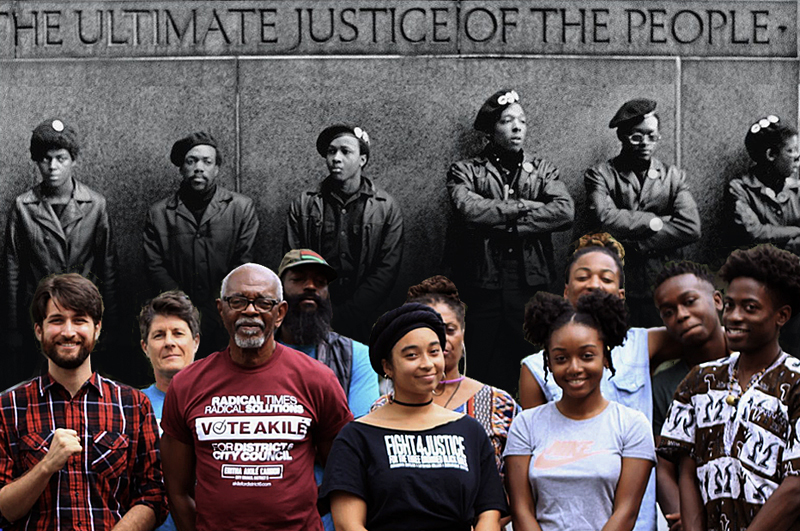 This is the “Out of Nowhere” that has landed the Uhurus center-stage in St. Petersburg today.
This is the “Out of Nowhere” that has landed the Uhurus center-stage in St. Petersburg today.
— Jeff Roby
October 22, 2017
(Continued in Part 2, Uhuru Takes the Stage — the theory.)

